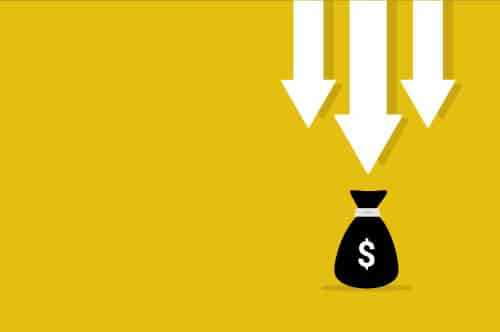Given double-digit declines in weekly sales year over year, many distributors are evaluating how, when and where they should cut costs to protect future cash flows in these unpredictable times due to the COVID-19 pandemic.
Follow these steps to take a measured approach to cost reduction in a crisis:
Perform a stress test.
The first step is to perform a stress test. A stress test measures a business’s resilience when subjected to unexpected shocks and subsequent operational changes. A stress test determines where you stand with cash flow and identifies how much you need to reduce costs. With this information, you can decide how to move forward.
These aren’t predictions; instead it’s about posing questions to find answers. As a recent McKinsey article points out, the future is not what we thought it would be. No one likes uncertainty. But if you ask the right questions, you’ll have more clarity on the possible answers. First: In the middle of the pandemic, how do you protect yourself, your employees and your company and still take care of your customers? Secondly, what will it look like to come out of this potential recession?
Identifying your highest-profit customers will be critical; they should continue to receive the highest levels of customer service, including no interruption in product delivery. You’re going to have product shortages, and you’re going to need to have some criteria to ration product when stock is limited or not available.
Determine cost reduction requirements.
My webinar dives into a few charts that show different levels of revenue numbers. Outline the case for optimistic, realistic or pessimistic.
- Most firms develop their cost reduction plans in tiers, which are triggered by progressively worse operating conditions.
- If you have a decline in cash availability, it’s usually a trigger to go to the next tier.
When you evaluate these scenarios and determine when you could run out of cash, determine how to reduce your expenses. In a pandemic, there’s not a lot you can do to enhance margin. Still, there are ways to reduce cost without affecting service:
- Removing the matching 401(k) benefit
- Removing floating holidays or educational expense reimbursements
- Temporarily reducing salaries
While ideally you’ll have had these action items in your economic disaster playbook, the most important thing is to think about what action items you can put into place, as well as following your gut instincts when it comes to preserving cash availability. The sooner you act, the less severe the action required.
Identify critical personnel and criteria for employment.
Consider the difference between revenue-producing expenses and pure overhead. Identify your most essential employees — and don’t give your leadership team a free pass. Typically, if you can get rid of one senior executive position, you’re saving three hourly workers that may be in critical functions. Focus on what will help the business be strongest when it emerges from this crisis.
Look at three areas:
- Sales: This could be a great time to upgrade your sales force, especially if top players from competitors become available. It also might be the disruption that allows you to finally fix your sales compensation plan.
- Purchasing: In a pandemic, with all the disruptions in supply chain, most of the opportunity you’re going to have is in buying better.
- Warehouse: In a pandemic, you’ve got to be able to ship to be able to invoice. If you can’t invoice, you can’t get cash. If you can’t get cash, you’ll die. Consider how you’ll mitigate chances of COVID-19 infection in your facilities, and plan on doing so throughout the summer.
The most important thing when looking at criteria for any change in personnel is not the people you’re letting go. This sounds hard, but it’s true. The most important people are those who remain. Make sure you’re holding onto the people most important to your continued operations.
Know the difference between firing, furloughing and salary reductions. In one example, a company was torn between laying off 150 people, or giving everybody a 5% pay cut. While both actions would have the same cost consequence, the choice to keep people on would be helpful once they were ready to move back to full capacity. You’ll have more trust and less scrambling to do later, a much better position to be in when the market recovers.
What to do when the math just doesn’t work out
A cost-reduction program helps you bridge the gap between when you run out of cash and when you’re projecting the recovery to come through. Let’s assume that you do the math, and you can’t make it work. For example, you may be carrying a lot of debt.
The only way to get unstuck is what I call “breaking glass.” As Seth Godin says, “If the only alternative is slow and painful failure, the way to get unstuck is to blow up a constraint, deal with the pain and then run forward. Fast.”
Hopefully this doesn’t come to having to close your location and sell off assets to bridge the gap. But before you sell the business, do the stress test so you know how much headroom you have.
Look to the future


